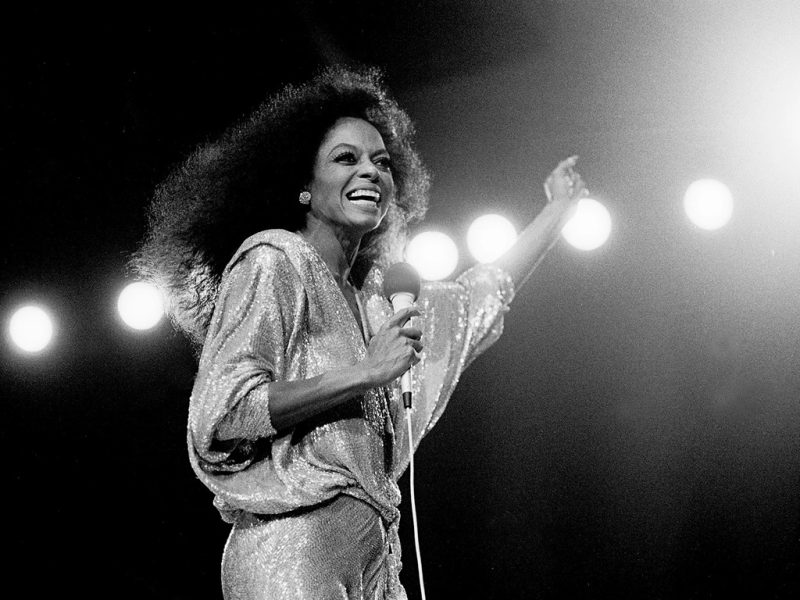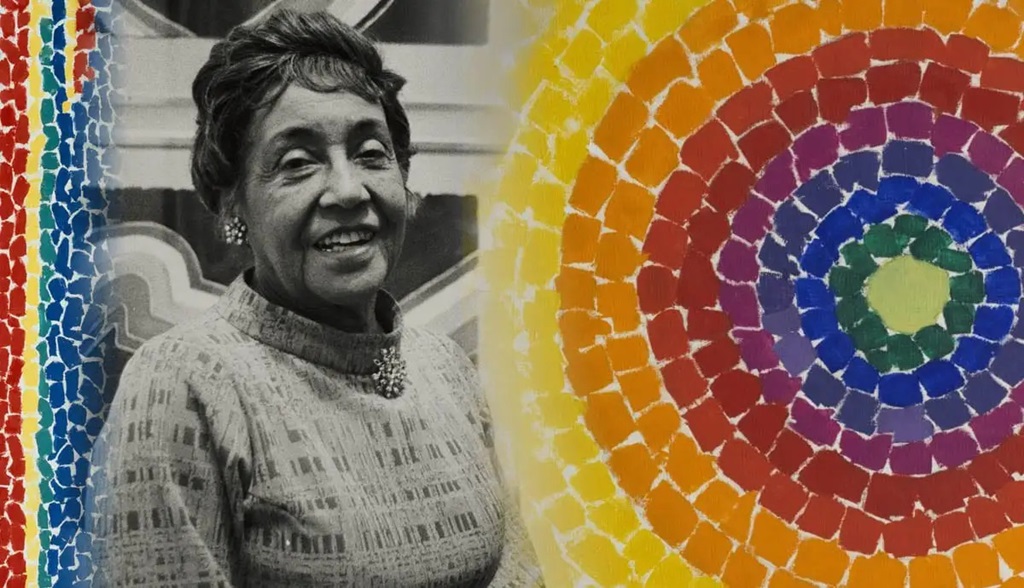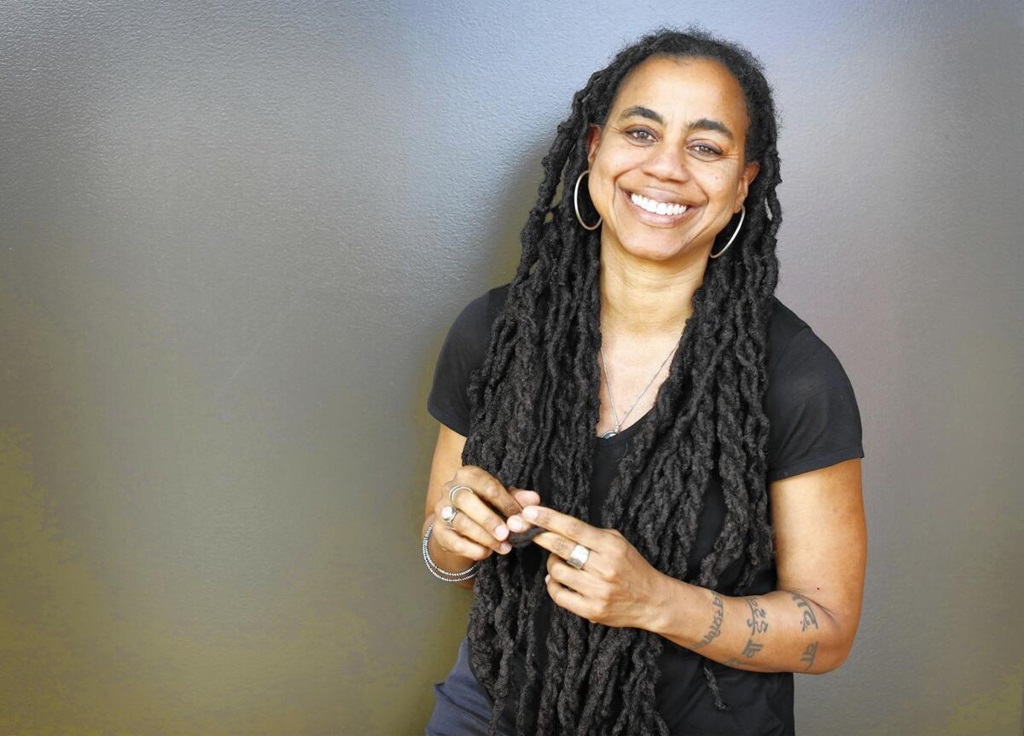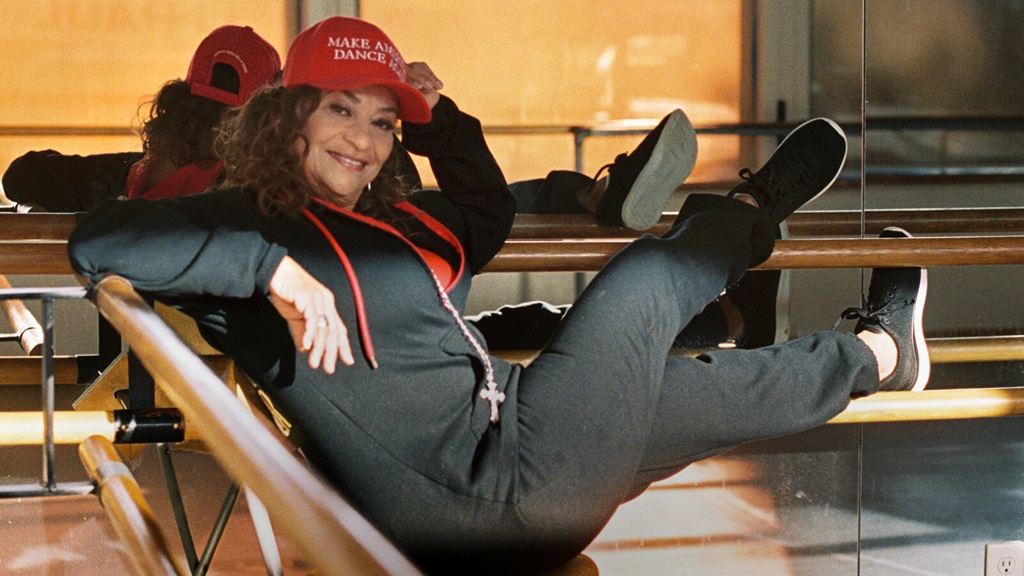Black women have significantly shaped artistic and cultural landscapes throughout history. Despite facing numerous obstacles, including racism and sexism, these women have made invaluable contributions to various domains, such as art, music, literature, dance, theater, and more. From the pioneering works of sculptor Edmonia Lewis to the soulful music of Aretha Franklin, these trailblazing individuals have left indelible marks on their respective fields. Despite being historically overlooked and undervalued, the creative gifts of Black female artists continue to inspire and move people around the world. Though not a comprehensive list, here are some of the most influential and groundbreaking black artists female.
Visual Artists
Faith Ringgold
Born in 1930, Faith Ringgold is best known for her story quilts – vividly painted canvases bordered with fabric strips and quilted. Her works often portray essential events in African American history or chronicle her life and family stories. Using quilting, a craft tradition often practiced by Black women, Ringgold asserted the value of “women’s work” and expanded art’s definition.
Some of her most famous story quilts include “Tar Beach,” “Church Picnic,” and “The Sunflower Quilting Bee at Arles.” Ringgold has exhibited internationally, and her works are in significant museum collections. She also authored award-winning children’s books telling stories of racial pride and equality.
Elizabeth Catlett
Elizabeth Catlett (1915-2012) created socially conscious sculptures and prints celebrating Black lives and experiences. Growing up in Washington, DC, Catlett could not study art in segregated public schools, so she took classes at Howard University instead. Later, she became the first Black woman to earn an MFA from the University of Iowa. However, during the McCarthy era, she was denied a teaching position due to her political activism and involvement with the Black arts movement.
As a result, Catlett moved to Mexico in 1946, where she created some of her most famous works highlighting Black women’s strength and endurance, such as “Sharecropper” and “Survivor.” Her bronze sculptures and woodcuts are hailed for their flowing, organic forms and emotional resonance.
Alma Thomas
A significant figure in the Washington Color School movement, Alma Thomas (1891-1978) is now considered one of the most important abstract painters of the 20th century. Unable to pursue an arts education in segregated Washington DC, Thomas worked as an art teacher and only began seriously dating her painting in her 60s after retiring.
Drawn to color and pattern, her vibrant, rhythmic canvases were inspired by her garden and reminiscent of jazz and improvisation. Thomas was the first Black woman to have a solo exhibition at the Whitney Museum of American Art in 1972. Several museums have recently mounted retrospectives showcasing her luminous body of work.
Amy Sherald
A contemporary artist on the rise, Amy Sherald came to prominence after being chosen to paint Michelle Obama’s official portrait in 2018. However, she had already garnered acclaim for her unique, stylized approach to portraiture of Black subjects. Using “grays” for skin tones rather than brown or black, she creates images focused more on evoking personality than realistic depictions.
Sherald also utilizes patterning and texturing within clothing and backgrounds to bring resonance. Since being diagnosed with a heart condition limiting her oil painting, Sherald works primarily in the medium of gouache. Her thought-provoking portraits encourage viewers to reconsider preconceived notions around race and representation.
Musicians
Bessie Smith
Nicknamed “The Empress of the Blues,” Bessie Smith (1894-1937) was one of the most successful early blues singers and remains an icon today. Born in Chattanooga, Tennessee, Smith overcame an impoverished childhood and teenage years touring with Ma Rainey to become the highest-paid Black entertainer of the 1920s.
Known for her powerful, soulful voice, Smith helped introduce blues music to mainstream white audiences through popular songs like “Downhearted Blues” and “St. Louis Blues.” She bridged the gap between classic rural blues and the jazz-influenced style emerging in urban areas. Smith’s technical mastery, phrasing, and live performances made her a superstar in a time when few Black women could achieve such prominence.
Billie Holiday
With her distinctive, melancholy voice and emotional depth, Billie Holiday (1915-1959) has left an indelible mark on jazz singing. Her unique vocal style incorporated blues, swing, and pop elements to convey nuanced, heartfelt meaning. Born Eleanora Fagan in Philadelphia, Holiday had a difficult childhood and was singing in Harlem nightclubs as a teen.
Her early singles like “A Sailboat in the Moonlight” and “Billie’s Blues” caught the attention of prominent label Columbia Records. However, her collaboration with saxophonist Lester Young resulted in some of her most iconic recordings like “All of Me” and “Fine and Mellow.” Though she faced racism and addiction issues, Holiday’s poignant songs about love and loss remain popular standards decades later.
Aretha Franklin
Widely known as the “Queen of Soul,” Aretha Franklin was the first woman inducted into the Rock and Roll Hall of Fame and had an astonishing reign on the R&B charts in the 1960s and 70s. Born in Memphis in 1942, Franklin grew up singing gospel in her minister father’s Detroit church before embarking on a secular recording career at age 18.
Her 1967 breakthrough album, I Never Loved a Man the Way I Love You, ignited her success with now classic hits like “Respect” and “(You Make Me Feel Like) a Natural Woman.” Franklin’s unmatched vocal power, piano skills, and dynamic phrasing created the model for soul and R&B singers that followed. She earned 18 Grammy Awards over her long career.
Diana Ross
As lead singer of the 1960s Motown supergroup The Supremes, Diana Ross helped shape the signature bubbly, elegant style of the Detroit label’s female vocal groups. After going solo in 1970, Ross broadened her range on lush, orchestrated albums and disco dance tracks, becoming one of pop music’s most glamorous stars.
Hits like “Ain’t No Mountain High Enough” and “Love Hangover” made her an icon of Black femininity, elegance, and empowerment. In the 1980s and 90s, Ross ventured into film, earning an Academy Award nomination for her portrayal of Billie Holiday in Lady Sings the Blues. She remains a beloved and enduring entertainer, still performing live worldwide.
Writers & Poets
Zora Neale Hurston
A significant figure of the Harlem Renaissance, Zora Neale Hurston (1891-1960) was a pioneering anthropologist, folklorist, and author who celebrated African American culture. After studying anthropology at Barnard College, Hurston produced significant ethnographic studies of Southern Black communities in books like Mules and Men.
She is most remembered, however, for her fictional writing, including the acclaimed 1937 novel Their Eyes Were Watching God, about a Black woman finding her voice and identity. Hurston’s works focusing on race, class, and gender were not fully appreciated until after her death. She is now regarded as one of the most essential Black authors, with her vibrant storytelling and characterization influencing generations of writers.
Maya Angelou
Among the most impactful voices in 20th-century literature, Maya Angelou (1928-2014) penned several autobiographies and poetry collections addressing issues like racism, identity, family, and travel that resonated with millions of readers. Angelou had a storied career, working as an actress, dancer, filmmaker, and civil rights activist before gaining acclaim with her first memoir, 1969’s I Know Why the Caged Bird Sings, about her childhood in the Jim Crow South.
Works that followed included Give Me a Cool Drink of Water fore I Die, And Still, I Rise, and Mom & Me & Mom. Angelou recited her poem “On the Pulse of Morning” at President Bill Clinton’s 1993 inauguration. Honored for her wisdom and insight into the Black experience, Angelou received over 30 honorary degrees before her death.
Gwendolyn Brooks
The first Black author to win the Pulitzer Prize for poetry, Gwendolyn Brooks (1917-2000) wrote nuanced, socially engaged poems documenting urban life in her native Chicago. Her 1945 collection A Street in Bronzeville established her as a poetic voice for the Black community.
Brooks went on to publish 20 books of poetry, including Annie Allen, a saga of a young Black girl’s coming of age, which won the 1950 Pulitzer Prize. Appointed Poet Laureate of Illinois in 1968, Brooks mentored young writers and focused on composing poems affirming the beauty and power of Black life, such as “To Black Women.” Brooks remains one of America’s most highly regarded poets, known for her detailed portraiture and lyrical mastery.
Octavia Butler
Best known for her evocative science fiction exploring themes of race, gender identity, and humanity, Octavia Butler (1947–2006) was a pioneer in the genre. After an isolated childhood, Butler began writing science fiction as a teenager despite lacking representation of Black female authors.
She went on to publish numerous highly imaginative novels, including Kindred, set in California with time travel to the slavery era, and the Xenogenesis trilogy about human genetic mutation and alien intervention. Butler’s Afrofuturist works broke down barriers in sci-fi, attracting readers through their compelling characters and prescient social commentary. Though she struggled for mainstream success during her lifetime, Butler’s innovative vision has been hugely influential.
Dancers & Choreographers
Josephine Baker
Josephine Baker (1906-1975) was an iconic entertainer who became the first Black woman to star in a major motion picture. Born Freda Josephine McDonald, she overcame poverty to start dancing in vaudeville and on Broadway as a teen. Baker moved to Paris in 1925 and became an overnight sensation for her sensual, groundbreaking performances clad only in a skirt of artificial bananas.
Adored by French audiences, she starred in two films, becoming the world’s highest-paid entertainer. Baker worked for civil rights and refused to perform for segregated crowds in America. She adopted 12 children worldwide, calling them her “rainbow tribe,” and used her fame to advocate equality and inclusion.
Katherine Dunham
As a dancer, choreographer, and anthropologist, Katherine Dunham (1909-2006) pioneered the field of Black dance and became one of the first Black women to choreograph and direct for major ballet companies. After studying anthropology and various global dance forms, Dunham synthesized Caribbean and African traditions with modern techniques to create unique works blending ceremony, folklore, and movement.
Her 1940 Bal Negre show brought her African-inspired choreography to Broadway. By founding the first US Black modern dance company and schools worldwide, Dunham trained generations of dancers while challenging racial barriers. Her pioneering style, fusing social awareness with artistic expression, influenced mainstays of American dance like Alvin Ailey.
Judith Jamison
A legendary dancer and choreographer with Alvin Ailey American Dance Theater for over four decades, Judith Jamison carried on founder Alvin Ailey’s mission of celebrating Black culture through artistic excellence. Born in Philadelphia, Jamison joined Ailey’s company in 1965, quickly becoming their star soloist.
Her passionate, athletic dancing invigorated roles like the empowered woman in Ailey’s signature piece “Revelations.” Named Artistic Director after Ailey died in 1989, Jamison brought the company to new heights, mentoring top choreographers of color and promoting inclusion. She also created roles for her choreography and fostered arts education. Jamison helped solidify Ailey as one of the world’s preeminent dance institutions before retiring in 2011.
Debbie Allen
Beginning her career in Broadway musicals and television, Debbie Allen emerged as a visionary choreographer, dancer, actress, director, and mentor to Black artists for over 50 years. After studying under dance legends like Katherine Dunham early on, Allen became famous for her choreography in Fame. She later directed episodes for popular shows like A Different World, Fresh Prince of Bel-Air, and Grey’s Anatomy.
In 2001, Allen founded the Debbie Allen Dance Academy in Los Angeles to provide youth arts education. She has spent her career opening doors for Black dancers, using art to build identity, creative freedom, and positive change. Allen’s dynamic style of fusing jazz, African, and modern techniques created a blueprint for Broadway and Hollywood.
Theater Artists & Playwrights
Mary Church Terrell
A writer, activist, and early civil rights leader, Mary Church Terrell (1863-1954) was one of the first Black women to earn a university degree. After studying in Europe, she wrote about racism and injustice faced by Black women in two books: A Colored Woman in a White World (1940) and an autobiography published in 1898. Terrell also co-founded the National Association of Colored Women and was an original member of the NAACP.
In her 80s, she successfully sued a Washington DC restaurant for refusing to serve her due to race, paving the way for later desegregation battles. Terrell balanced her political activism with literary pursuits like drama and poetry. Her play portrays happy middle-class Black lives contrasted with common racist depictions.
Lorraine Hansberry
Best known for writing the 1959 play A Raisin in the Sun, Lorraine Hansberry (1930–1965) was the first Black woman to write a play performed on Broadway. Her pioneering drama offered a complex portrait of an aspirational Chicago family confronting issues like discrimination, identity, and housing inequality while pursuing the American Dream.
Drawing inspiration from her family’s legal battle against restrictive covenants, Hansberry created psychologically nuanced Black characters rarely seen. Though she only completed one other play before dying of cancer at 34, Hansberry’s impact was immense. She paved the way for Black voices in American theater and created iconic roles that spoke to the universal human condition.
Ntozake Shange
A trailblazing poet, playwright, and Black feminist, Ntozake Shange’s (1948–2018) experimental theater piece For Colored Girls Who Have Considered Suicide / When the Rainbow Is Enuf broke new ground. First performed in California bars in the mid-1970s, Shange’s choreography used spoken word, dance, and music to portray the struggles and resilience of seven Black women.
After a victorious off-Broadway run, the work became a Broadway sensation, sparking dialogue about racism, sexism, abuse, and self-determination. Colored Girls became an influential cultural touchstone translated into over 30 languages. Shange went on to write plays, novels, essays, and poetry before she died in 2018, leaving an empowering creative legacy for women of color.
Suzan-Lori Parks
A Pulitzer Prize-winning playwright, Suzan-Lori Parks tells unique stories illuminating overlooked aspects of Black history. After co-founding an experimental theater group in the 1980s, Parks emerged with daring, lyrical plays like Imperceptible Mutabilities in the Third Kingdom, exploring African American life through a nonlinear, avant-garde lens.
Her 2002 Topdog/Underdog, about two brothers and dreams deferred, won the Pulitzer for Drama. Parks continues to experiment with theatrical form in works like White Noise, which depicts the racial killing of Leo, an unarmed Black man, from multiple perspectives. As the first Black woman to win the Pulitzer for drama, Parks’ innovative plays reflect the complexity of African American experiences.
Visual Artists
In addition to their groundbreaking creative work, these Black female artists opened doors for future generations and greatly expanded art’s definition. Figures like Ringgold and Catlett incorporated political activism into their art, while Thomas’s vibrant abstractions shattered racial and gender barriers.
Today, artists like Sherald build on their legacy, emphasizing identity and representation. Though marginalized in their times, these pioneering women demonstrated the power of artistic expression. Their lasting influence continues to shape visual arts.
Musicians
The musical contributions of these Black women span early blues, jazz, soul, pop, and R&B. Despite facing poverty, loss, racism, and addiction; they channeled their experiences into soul-stirring songs still treasured today. Their talent and charisma allowed them to break color barriers and thrive in hostile times.
Smith and Holiday paved the way for future blues and jazz icons, while Franklin defined the soul era’s peak. Diana Ross’s pop pedigree led to her becoming an idol of Black femininity and success. Their irreplaceable artistry created the template for modern music.
Writers & Poets
These literary pioneers gave voice to the complexity of Black identity and heritage. Hurston and Angelou preserved African American stories and culture through fiction, memoir, and poetry. Brooks captured urban Black life with nuance and care, while Butler broke new sci-fi ground in her speculative Afrofuturist epics.
Their masterful works tackled racism, violence, family, and feminism with resonance and power. Often unrecognized in life, their bold perspectives and skillful storytelling now cement their literary legacy. These authors’ and poets’ fearless creativity expanded literature’s scope.
Dancers & Choreographers
The boundary-breaking artistry of these Black dancing innovators created new movement languages and opportunities. Baker and Dunham popularized African and Caribbean-derived dances, melding them with modern techniques.
Figures like Jamison and Allen carried on their legacies further, founding major Black companies and mentoring young talent. Their athletic, emotional choreography formed the bedrock of modern, Broadway, and Hollywood performances. Both on stage and behind the scenes, these women paved the way for greater inclusion and diversity in dance.
Theater Artists & Playwrights
In theater, these bold dramatists portrayed the complexity of Black life beyond limiting stereotypes. Terrell captured middle-class African American experiences, while Hansberry’s A Raisin in the Sun became an enduring classic. Shange’s affirming choreography For Colored Girls made an indelible cultural impact. Parks continues to experiment with form, shining light on forgotten narratives. Their groundbreaking voices greatly expanded Black representation and participation in American theater.
Despite overwhelming obstacles, these brilliant Black women succeeded through perseverance and trailblazing artistry. Their indelible creative impact resonates worldwide across visual arts, music, literature, dance, and theater. Each artist powerfully amplifies the multifaceted experiences of Black women then and now. By boldly expanding the possibilities for African American representation and participation in the arts, their revolutionary legacies endure.
In conclusion, what is their lasting legacy?
Despite rampant inequity, this brilliant black artists female shattered barriers through hard-fought, trailblazing success that forever transformed the arts. Their multifaceted works told stories no one else could, with nuance, dignity, and power. They opened the door to possibilities for women of color in their fields and beyond. Today, their revolutionary artistry continues to resonate, inspire, and uplift. By boldly asserting their voices, they paved the way for a more just, inclusive, creative future.
Frequently Asked Questions
What challenges did these Black female artists face?
Many overcame poverty, racism, sexism, violence, addiction, and lack of arts education access. Segregation kept them out of many mainstream institutions. Several found tremendous success abroad. Despite immense talent, most were marginalized and under-appreciated in their lifetimes.
How did they break down barriers?
Their determination and talent opened doors in white-dominated fields. Figures like Ringgold and Parks introduced new narratives and forms. Many became “firsts” – the first Black woman on Broadway, the first to lead major companies, etc. By excelling internationally, some circumvented American racism. Teaching and mentoring generations paved the way for future diversity. Their unprecedented success inspired those who followed.
What common themes emerge in their work?
Many addressed issues surrounding racism, oppression, feminism, discrimination, identity, and institutional barriers facing Black communities. Works often celebrate the beauty, resilience, and solidarity within African American life. Storytelling forms like memoirs, poetry, plays, and novels allow nuanced perspectives. Music offered catharsis and emotional release. Through art, many aimed to empower Black audiences.
How did they change stereotypes?
Their portrayals of multifaceted, aspirational Black characters countered racist caricatures in the media. Works affirmed the creativity, strength, and humanity of African American experiences. They displayed Black excellence and success while still acknowledging struggle. Their emergence as “firsts” disproved beliefs that Black women couldn’t achieve greatness in the arts.
Why are they important today?
They expanded the arts’ scope, paving the way for Black creators in predominantly white fields. Their bold, authentic voices remain resonant. Current artists build on the traditions they began. Many tackled issues are still relevant now. As racial justice and representation are reexamined, their groundbreaking work emerges as visionary. They inspire future generations.










